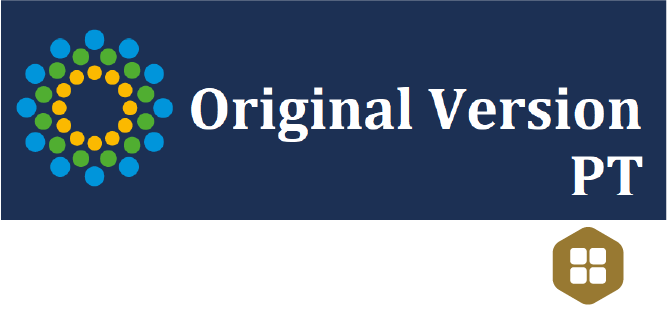Navigating new waters: Challenges of a nautical company in the post-pandemic era
DOI:
10.14211/regepe.esbj.e2466Keywords:
Dynamic capabilities, Digital transformation, Small and medium-sized enterprisesAbstract
Objective: This teaching case was developed for undergraduate and graduate courses in disciplines related to Strategic Management, with a focus on decision-making in uncertain scenarios and economic recovery. Dilemma: The case presents the challenges faced by Sea River, a micro-enterprise in the nautical sector, after the growth observed during the Covid-19 pandemic. The case ends by inviting participants to reflect on how to sustain the results achieved in the post-pandemic period. Relevance/Originality: The company's response can be analyzed in light of the concepts of Dynamic Capabilities (DC) and Digital Transformation (DT). The theme of DC is contemporary, of abstract understanding and, therefore, not commonly addressed in teaching cases; the case exemplifies its application. It also allows us to address DCs associated with the theme of DT, and to deal with both in the context of a micro-enterprise during a rare and unique event that challenged the world and organizations: the Covid-19 pandemic.
Downloads
Translations of this article
References
Ackoff, R. L. (1983). Beyond prediction and preparation. Journal of Management Studies, 20(1), 59–69. https://doi.org/10.1111/j.1467-6486.1983.tb00198.x
Barney, J. (1991). Firm resources and sustained competitive advantage. Journal of Management, 17(1), 99–120. https://doi.org/10.1177/014920639101700108
Bourreau, M., Gensollen, M., & Moreau, F. (2012). The impact of a radical innovation on business models: Incremental adjustments or big bang? Industry and Innovation, 19(5), 415-435. https://doi.org/10.1080/13662716.2012.711026
Chen, J. E., Pan, S. L., & Ouyang, T. H. (2014). Routine reconfiguration in traditional companies’ e-commerce strategy implementation: A trajectory perspective. Information & Management, 51(2), 270–282.
Li, L., Su, F., Zhang, W., & Mao, J.-Y. (2017). Digital transformation by SME entrepreneurs: A capability perspective. Information Systems Journal, 28(6), 1129-1157. https://doi.org/10.1111/isj.12153
Lindqvist, M. H. (2019). The uptake and use of digital technologies and professional development: Exploring the university teacher perspective. In Handbook of Research on Faculty Development for Digital Teaching and Learning. IGI Global. https://doi.org/10.4018/978-1-5225-8476-6.ch025
Margiono, A. (2021). Digital transformation: Setting the pace. Journal of Business Strategy, 42(5), 315-322. https://doi.org/10.1108/JBS-11-2019-0215
Markets & Markets. (2023). Digital transformation market. Retrieved 22 May 2023, from https://www.marketsandmarkets.com/Market-Reports/digital-transformation-market-43010479.html#:~:text=The%20global%20Digital%20Transformation%20Market,by%20the%20end%20of%202027
Matarazzo, M., Penco, L., Profumo, G., & Quaglia, R. (2021). Digital transformation and customer value creation in Made in Italy SMEs: A dynamic capabilities perspective. Journal of Business Research, 123, 642-656.
Mishnick, N., & Wise, D. (2024). Social media engagement: An analysis of the impact of social media campaigns on Facebook, Instagram, and LinkedIn. International Journal of Technology in Education (IJTE), 7(3), 535-549. https://doi.org/10.46328/ijte.699
Nadkarni, S., & Prügl, R. (2021). Digital transformation: A review, synthesis and opportunities for future research. Management Review Quarterly, 71, 233-341. https://doi.org/10.1007/s11301-020-00185-7
Santos, S. dos, Begnini, S., & Carvalho, C. E. (2020). O efeito do uso das mídias sociais e das capacidades dinâmicas no desempenho mercadológico de micro, pequenas e médias empresas. Revista Brasileira de Marketing, 19(1), 174-196.
Statista. (2023). Digital transformation – statistics & facts. Retrieved 14 Nov 2023, from https://www.statista.com/topics/6778/digital-transformation/#topicOverview
Takahashi, A. R. W., Bulgacov, S., & Giacomini, M. M. (2017). Capacidades dinâmicas, capacidades operacionais (educacional-marketing) e desempenho. Revista Brasileira de Gestão de Negócios, 19(65), 375-393.
Teece, D. J. (2007). Explicating dynamic capabilities: The nature and microfoundations of enterprise performance. Strategic Management Journal, 28(13), 1319-1350. https://doi.org/10.1002/smj.640
Teece, D. J., Pisano, G., & Shuen, A. (1997). Dynamic capabilities and strategic management. Strategic Management Journal, 18(7), 509-533.
Treacy, M., & Wiersema, F. (1998). A disciplina dos líderes de mercado (3ª ed.). Rocco.
Warner, K. S. R., & Wäger, M. (2019). Building dynamic capabilities for digital transformation: An ongoing process of strategic renewal. Long Range Planning, 52, 326-349. https://doi.org/10.1016/j.lrp.2018.12.001
Wilden, R., Devinney, T. M., & Dowling, G. R. (2016). The architecture of dynamic capability research: Identifying the building blocks of a configurational approach. Academy of Management Annals, 10(1).

Downloads
Published
Métricas
Visualizações do artigo: 48 Caso de ensino (Português (Brasil)) downloads: 8 Notas de ensino (Português (Brasil)) downloads: 1 Áudio (Português (Brasil)) downloads: 2 Vídeo (Português (Brasil)) downloads: 1 Pareceres (Português (Brasil)) downloads: 4
How to Cite
Issue
Section
License
Copyright (c) 2025 Bruno Henrique Rocha Fernandes, Marcos Antônio Lopes da Silva, Adriana Roseli Wünsch Takahashi

This work is licensed under a Creative Commons Attribution 4.0 International License.
Authors who publish in this journal agree to the following terms:
-
The author(s) authorize the publication of the text in the journal;
-
The journal is not responsible for the opinions, ideas, and concepts expressed in the texts, as they are the sole responsibility of their authors;
-
Authors retain copyright and grant the journal the right of first publication, with the work published under the CC BY 4.0
License, which allows sharing the work with acknowledgment of authorship and initial publication in this journal;
-
Authors are allowed and encouraged to post their work (Submitted version, Accepted version [Manuscript accepted by the author], or Published version [Record version]) online, for example in institutional repositories or preprints, as it can lead to productive exchanges as well as earlier and greater citation of published work. REGEPE requires that authors indicate/link the published article with DOI. See the Effect of Open Access.
Data statement
-
The research data is contained in the manuscript














